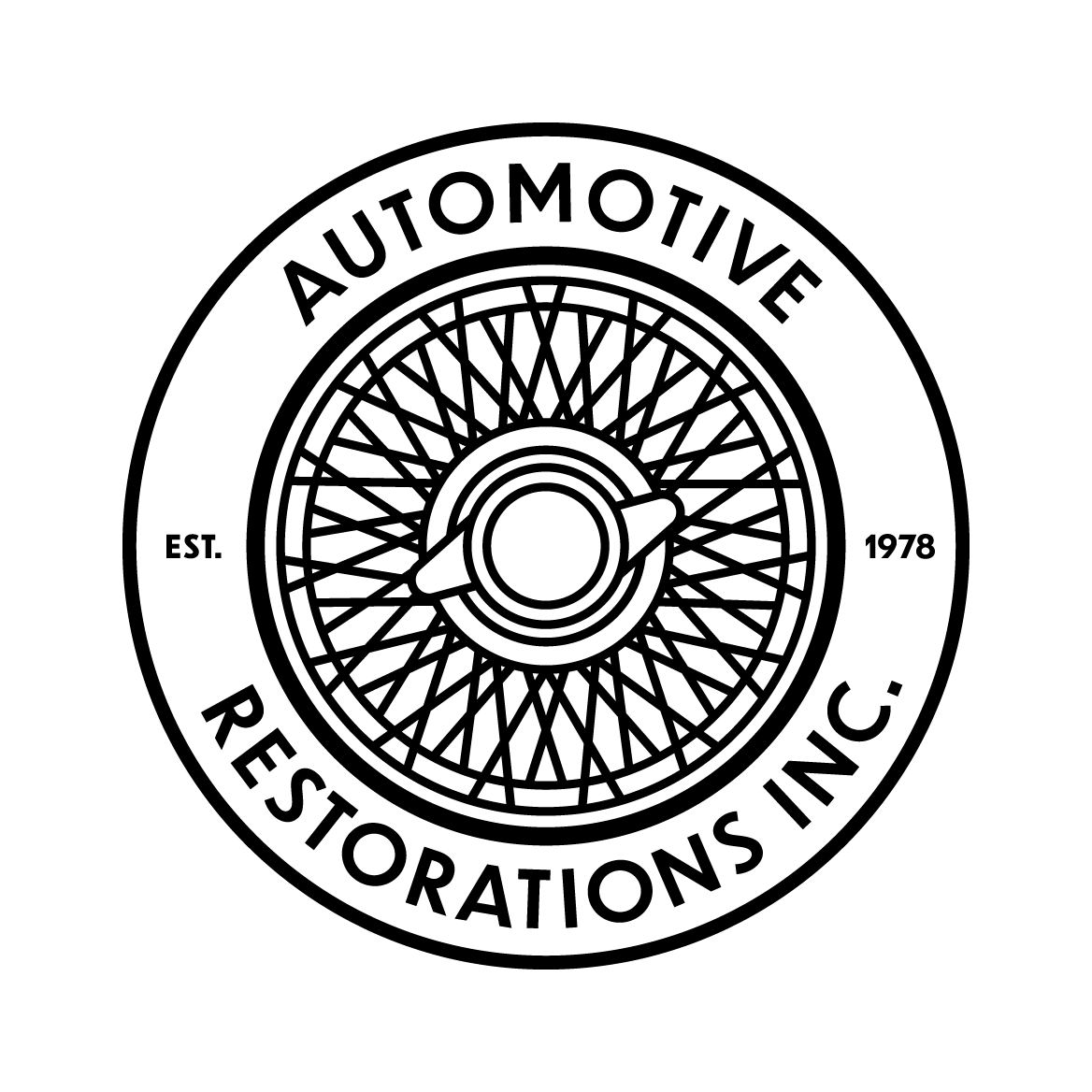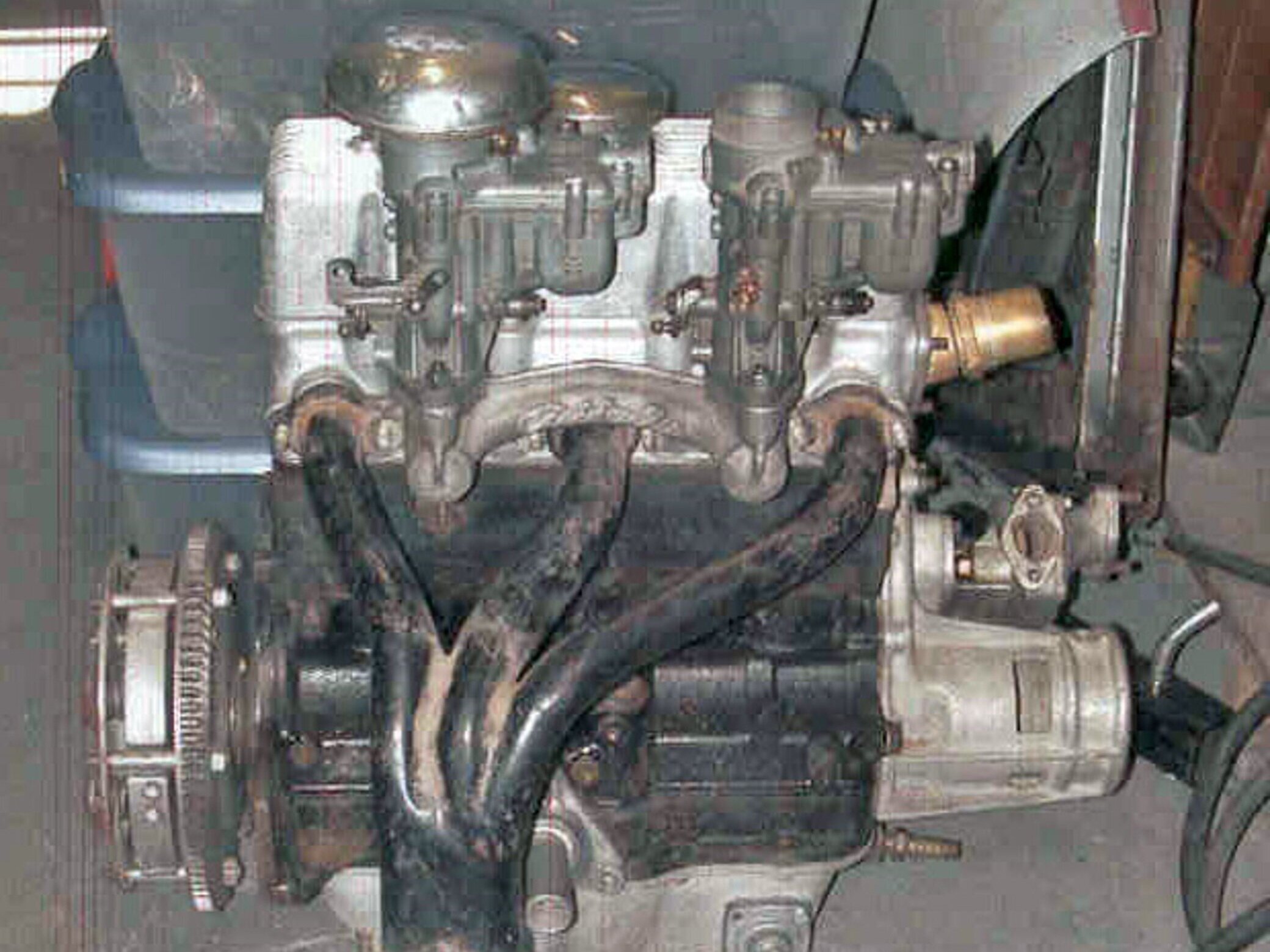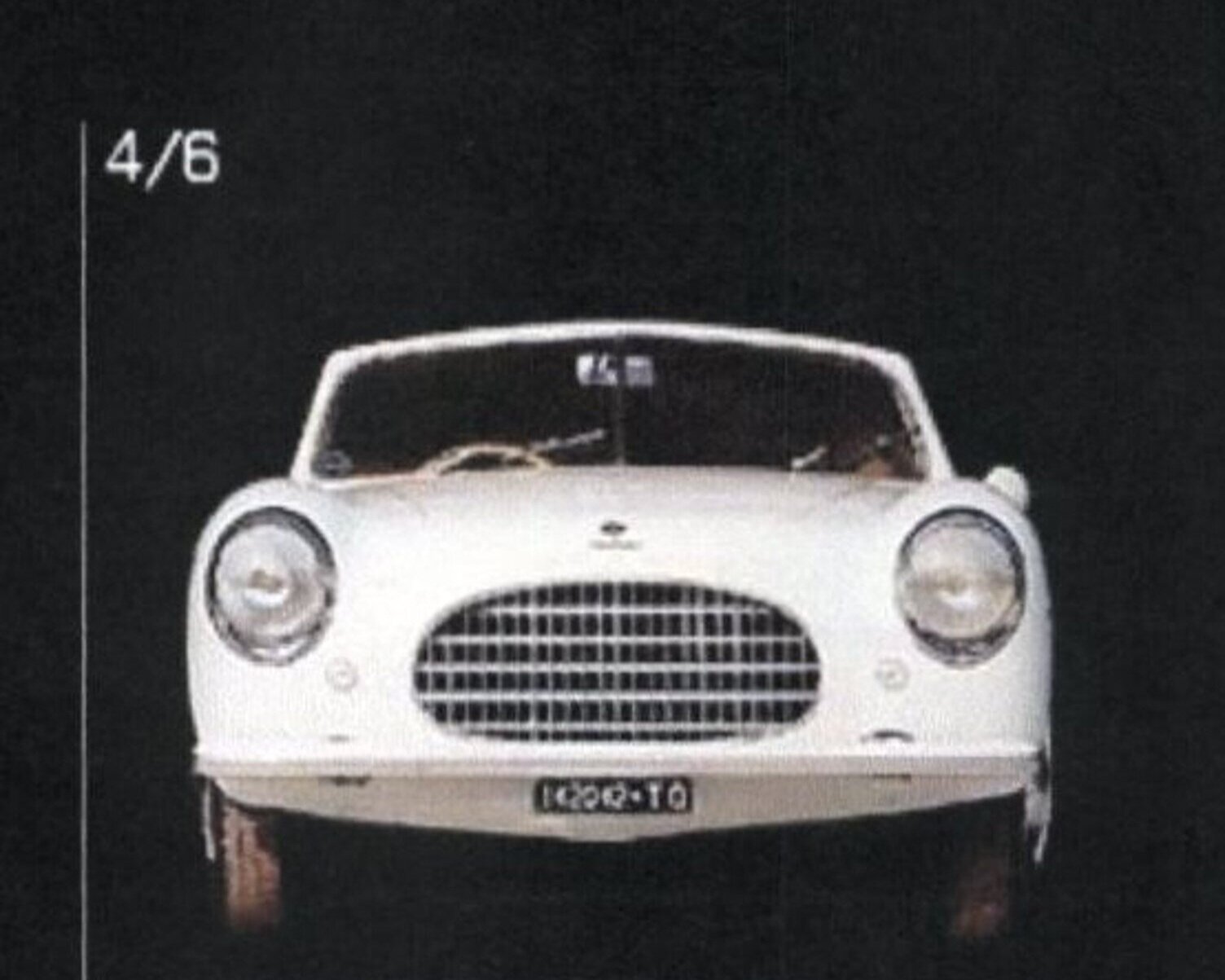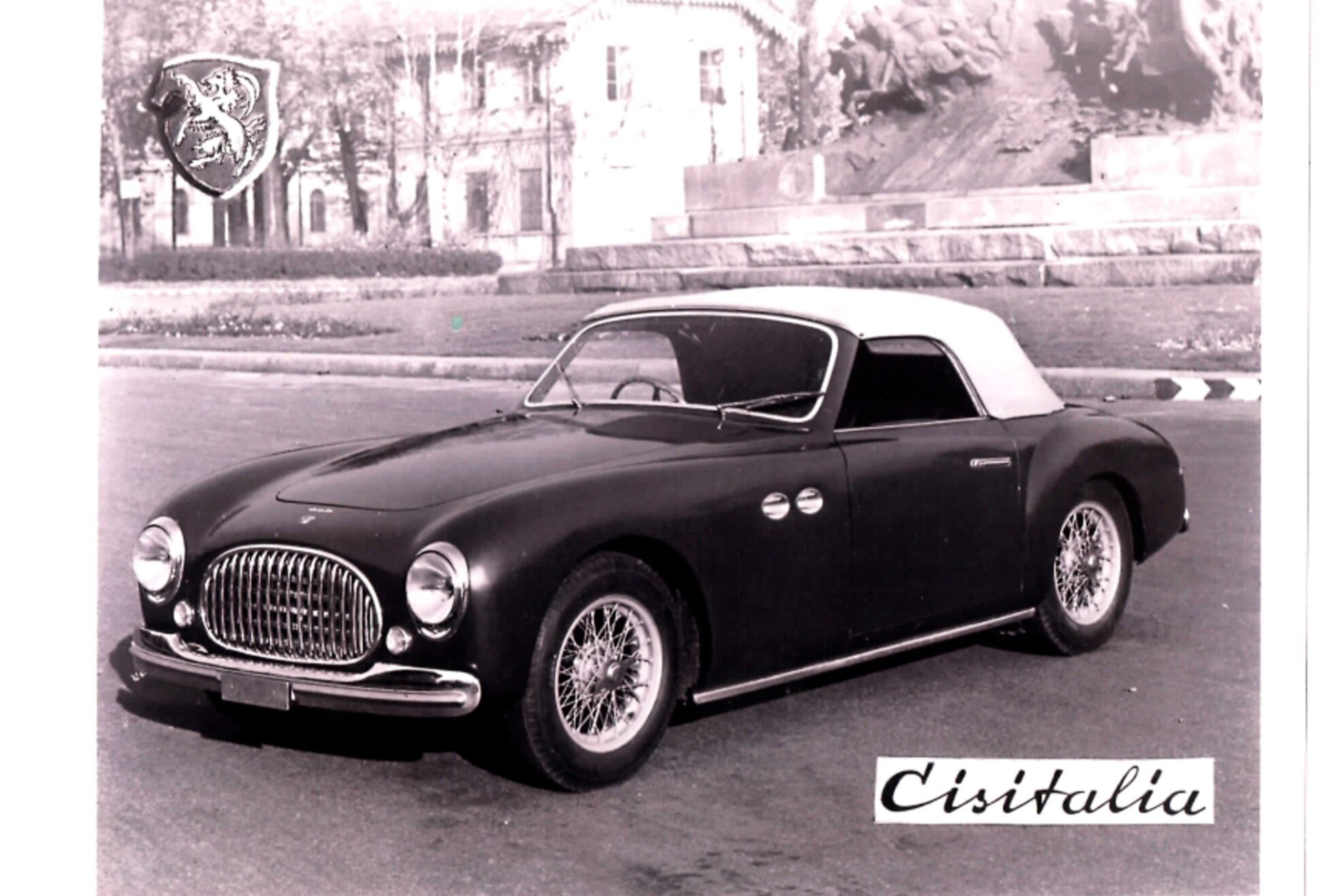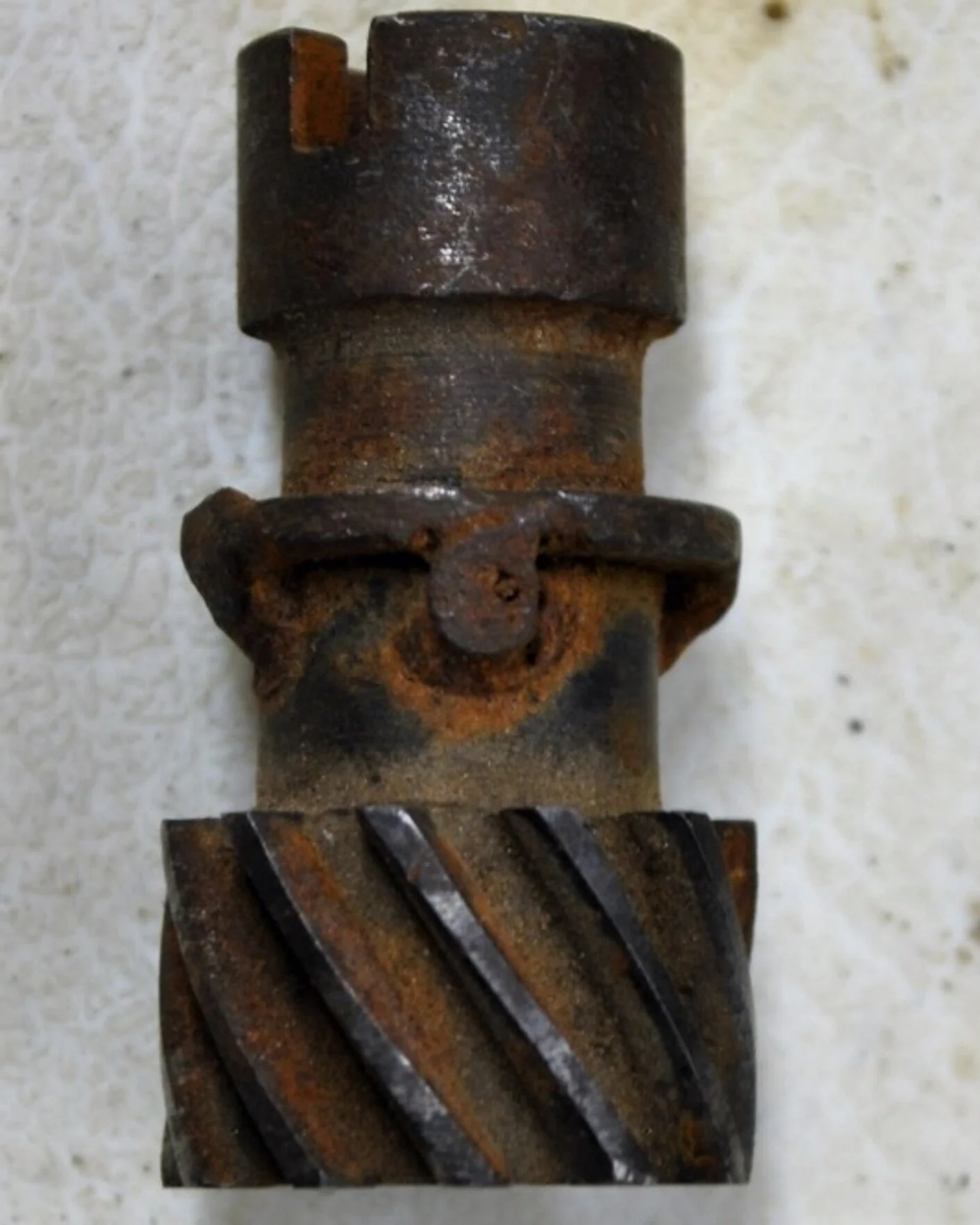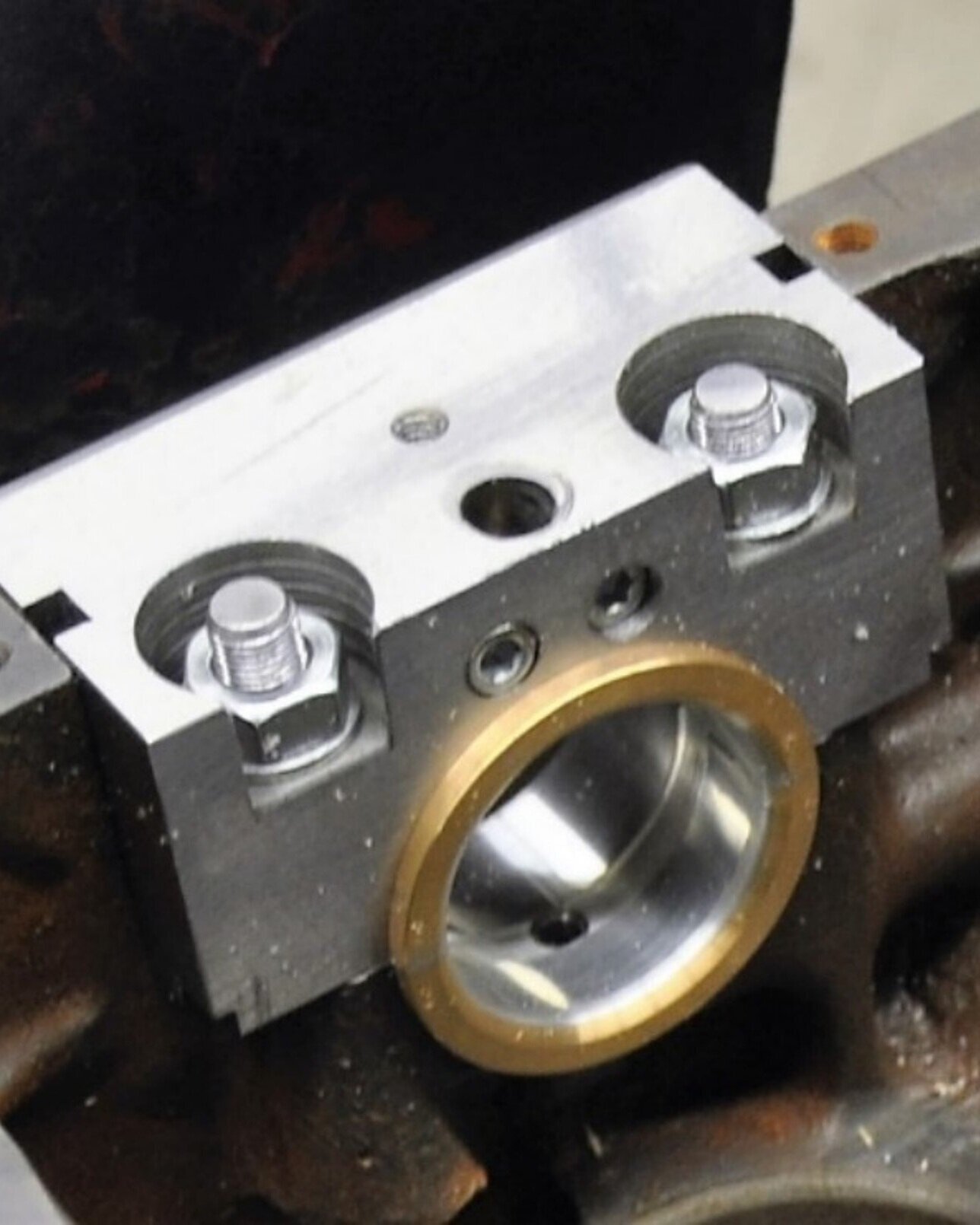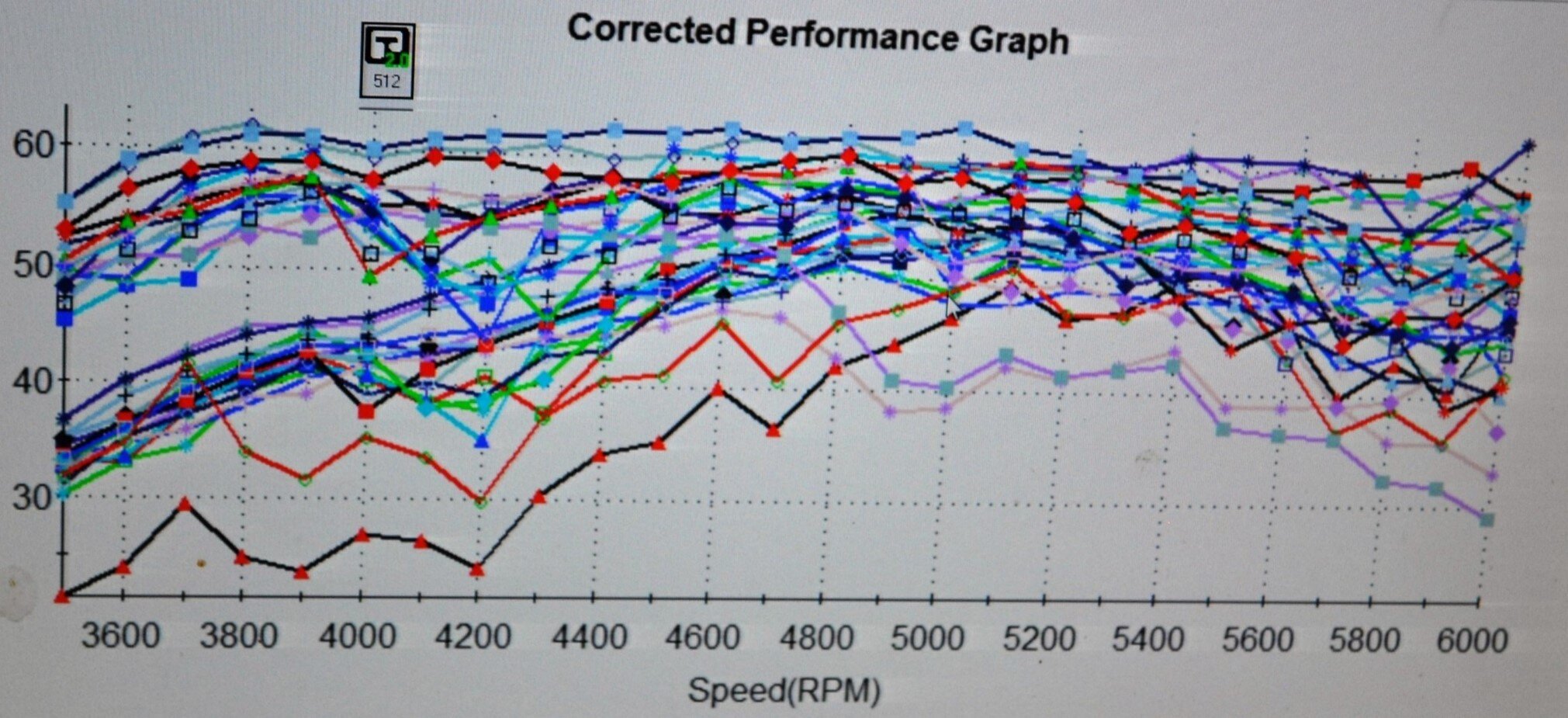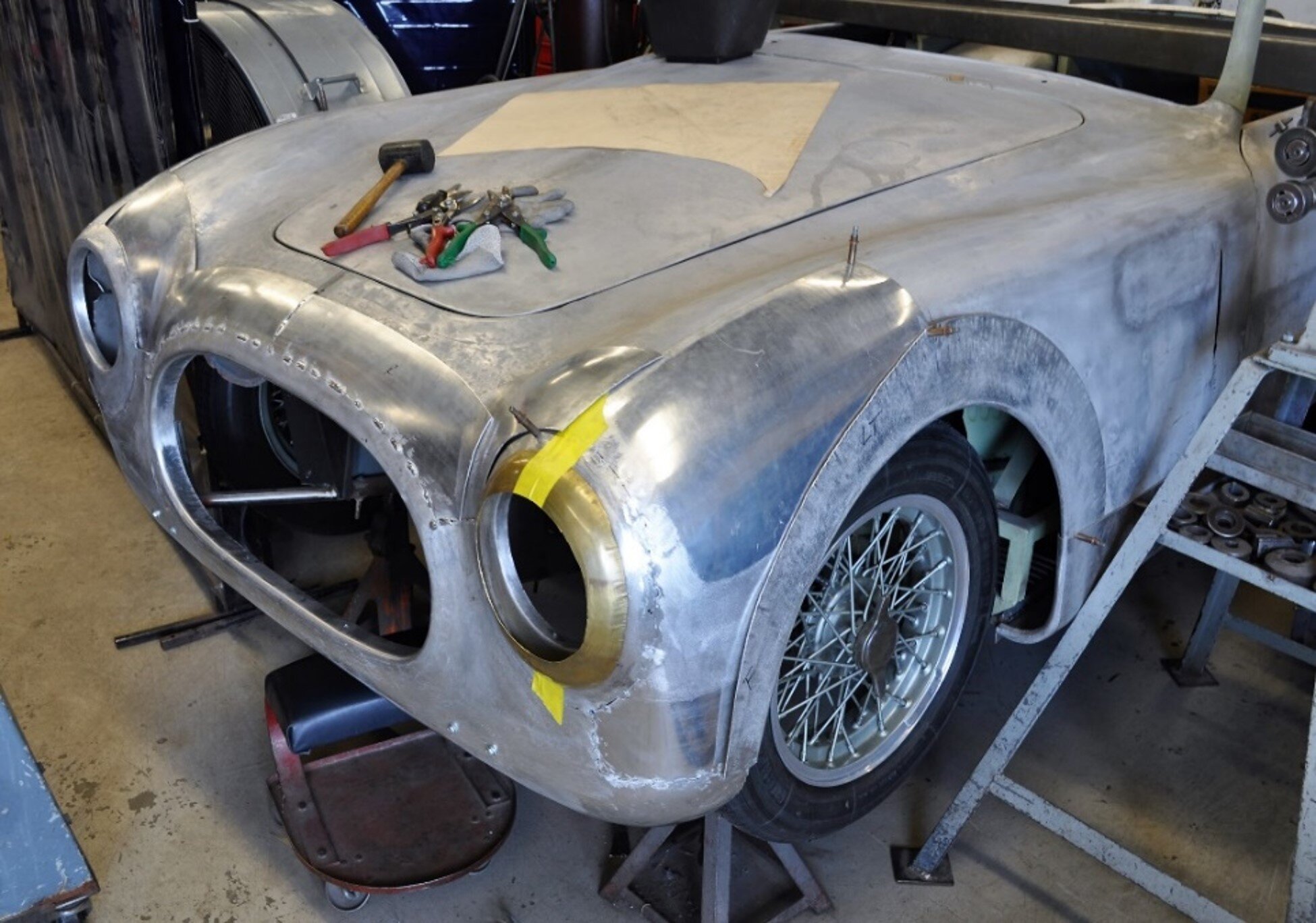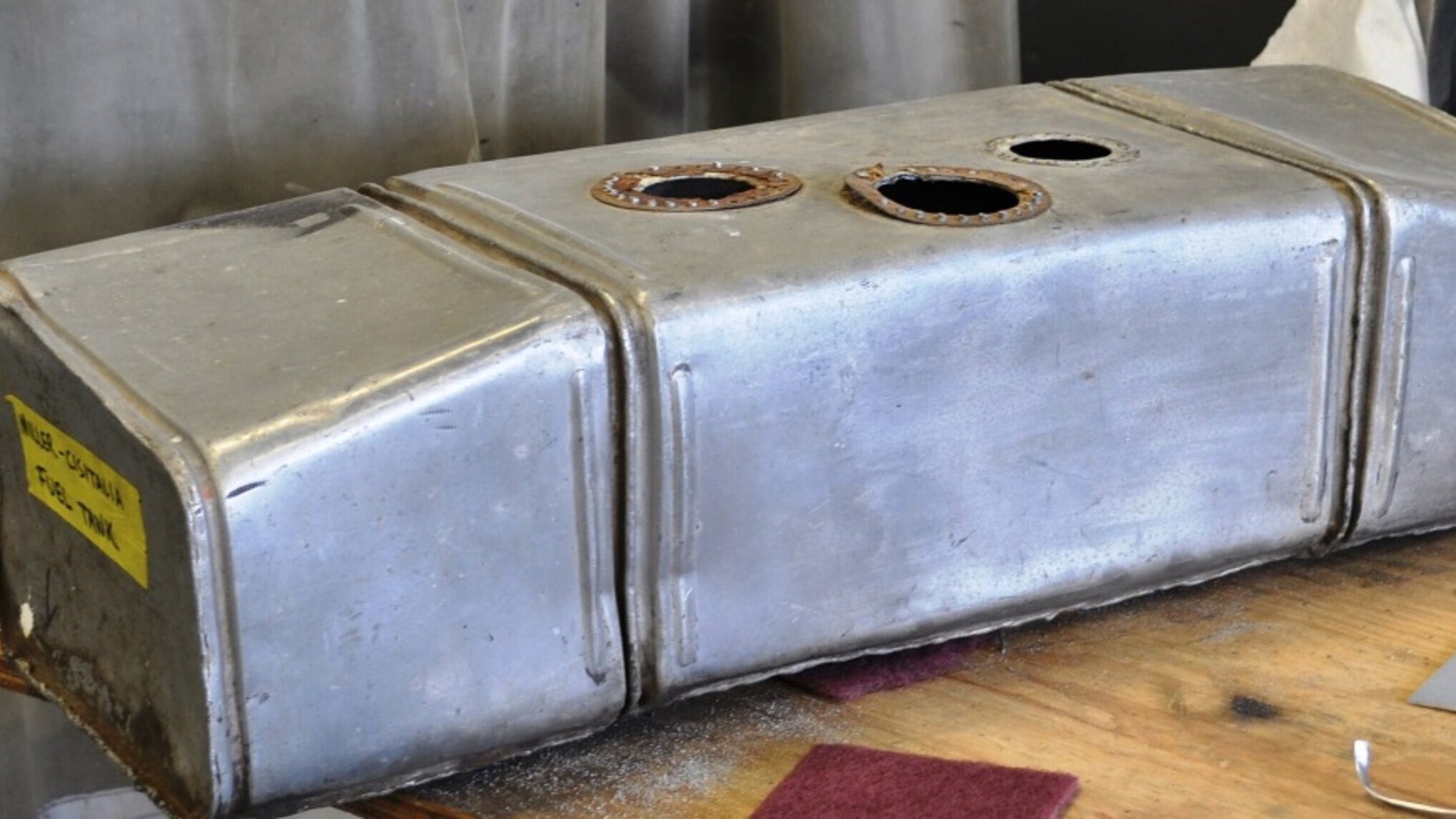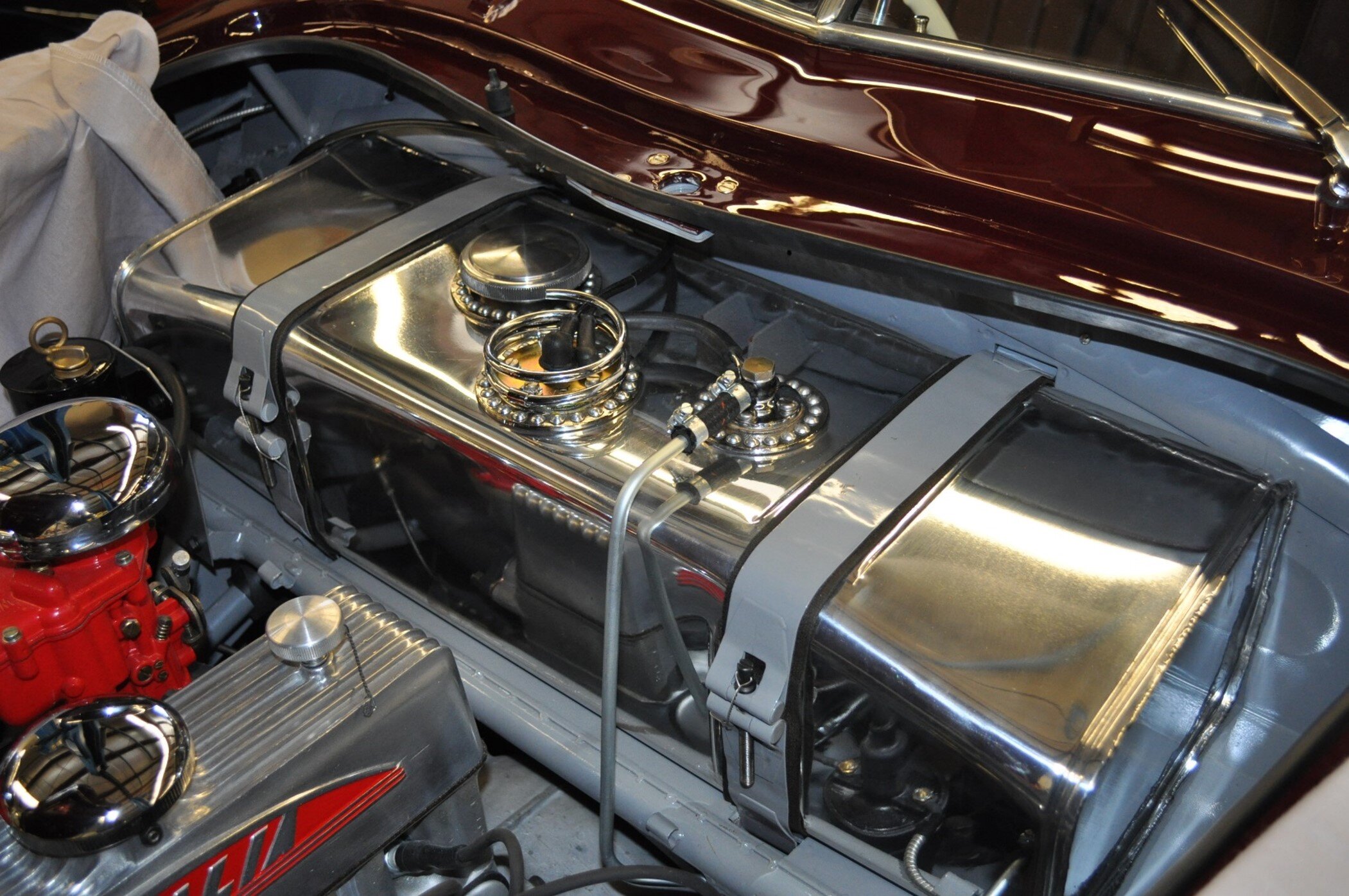A Cisitalia of Many Continents
Piero Dusio was a successful Italian industrialist with a dream. A car of his own creation was the focus. The Cisitalia name and the cars produced aptly illustrate an achievement of one man’s passion for the automobile. Dusio built up the Compagnia Industriale Sportiva Italia (Cisitalia) prior to the start of World War II. It was a successful conglomerate with interests in the textile and hospitality industries, along with sporting goods and banking. He attracted exceptional design and driving talent, including Dante Giacosa, Carlo Abarth, Ferry Porsche, and the incredible Tazio Nuvolari to help him create exceptional machines. Though started in Italy, Cisitalia and Piero did not stay too long. The works moved to Argentina apparently due to some taxation issues and the Italian government. Juan Peron’s wallet and hospitality was the solution; Dusio moved and established Autoar (Automotores Argentinos) S.A.I.C. on 22 March 1949. The company relocated, and so did a likely not fully completed, Vignale bodied chassis 054 SC. It was soon used around Buenos Aires though the exact date of sale is difficult to determine. 054 is early in the chassis number sequence, so we are assured that this is one of the cars that made its first continental journey early in life. Argentina's roads called, and years of service then storage found 054 a bit tired but ready for more travel circa 2000. Folklore at the southern hemisphere garage site recalled this to be a car that Dusio had lent to the Perons for personal use on an occasion or two. Though son Carlo Dusio stayed behind in Italy and operated a restructured Cisitalia works, the driving wheel had, in fact, “gone south.” This car stayed with its creator. Restoration of the vehicle you see here has taken about a decade with great attention paid to originality and the differences between this Vignale built car and other coachbuilders efforts. We at Automotive Restorations Inc have enjoyed the ability to practice our craft at this level and thank Henry Miller for his patience and dedication to seeing this through properly. We hope you concur.
DISCOVERED AND DORMANT FOR YEARS IN A BUENOS AIRES LOCKUP: A deal is soon struck, and Cisitalia Vignale Spyder # 054SC gets winched onto a trailer. It is soon to be aboard ship for this Cisitalia’s 3rd “continental conversion” bound for Southern Florida with Argentinian native, now Florida resident Orlando Cairo in control of operations. Yes, we like the wire wheels on the trailer too!
Cisitalia 202SC Vignale Syder number 054 found several homes in Argentina among a very active Cisitalia community and club. Writer and historian and former Automobile Quarterly editor Jonathan Stein did some research on 054’s Italian origins. Researcher Marianne Frisch followed up on his work to learn a bit about the locales where the car spent most of its life. Exact dates are uncertain, but following the sale by Autoar (Automotores Argentinos) S.A.I.C. in the mid-nineteen fifties, we find Carlos Alberto Alissina of La Plata, Argentina, the owner of record. He is followed by Ernesto Benavidez, Gualeguaychu’ of Entre Rios, Argentina. The car then went to Jorge Anadon of Parana City, who treated this Cisitalia to a new brighter red finish. 054’s final Argentinian owner was Hector Mendizabal, who garaged it in Buenos Aires. Orlando Cairo, of Miami, Florida, found it in BA and partnered with its first American owner, collector Michael Graham to import 054 to the U.S. in the form you see here. It was reasonably complete & rolling when the transfer to the current owner took place. A proper restoration followed.
LANDED & FOR SALE: Cisitalia 202SC in rolling chassis form with…well, quite a few parts in need of just a bit more than simple installation. Said to be complete, a deal is made, and we start looking at 054 as a project.
CAR & PARTS: Despite years of storage, it was encouraging to find the original #075 engine and all or almost all of that, which had been removed decades ago. There it was spread out on Orlando’s floor, though most very much in need of substantial component restoration. Top, center: even the radiator had been disassembled to core & tanks. Lower right, N 075 just as stamped on the Chassis plate.
USED? Oh yes, very much so!! But all the key original drive train items were there. Someone had clearly started this project decades earlier, and, thankfully, when progress stopped, the bits were placed in the vehicle for safekeeping. PROOF - Car lovers & enthusiasts worldwide tend to care about great cars!
CAREFUL DISASSEMBLY AND RESEARCH: JOB 1 - Though 054 had been serviced to keep running, it had never been restored. A few aesthetic changes had also been added over the years, but the evidence of originality was all there. We soon knew that this was a Vignale bodied Cisitalia with trafficators in the flanks. All the mountings and bits of the cut wiring remained. Note photos upper left: the original dark red color was present under windscreen edging and other covered spots. The original brown leather still evident at tacking edge folds, where the dark blue dye had not found a home. We soon had both paint & leather color matched per photos right. Other details of construction and form, along with badges in a box, indicated Vignale coachwork, all similar to the white car above.
RESEARCH CONTINUES: When we asked about the bumpers, we were told that it “never had bumpers!” with a degree of certainty. This came from this car’s long term southern hemisphere curator, who had worked at Autoar (Dusio’s Automotores Argentinos) for years. We had our doubts! Once the paint was off and body restoration in process, it was clear that this was, in fact, the case. He was also right about the “Portholes added much later & not correct” comment. Note photos: sloppy, uneven cuts for body side holes, no bumper bracket exit holes in the body, or any sign of welds on skin. Mounting points on the framework also absent.
Research came in two forms: 1 – Networking among the community of enthusiasts and historians. 2 – close and careful examination of 054’s bones and details. We soon knew that this was a rare Vignale built 202 Spyder and not a Stablimenti Farina car. It was also clear that 054 crossed the pond as a part of Dusio’s relocation. Note the Brochure cover right showing a Vignale bodied car with trafficators and no front parking lamps. There are quite a few other differences we noted during disassembly. We were fortunate; during this restoration, we had several other coupe and Spyder 202s in the shop, and we measured and looked carefully. Above is a Stablimenti Farina bodied 202 with side vent ports and parking lamps. Pictured top left is another Vignale car. The earliest cars tended to have disc wheels, but wires were the norm on Spyders past about # 35.
COMPLETE? Well, not really. Among the missing: a correct grille. Note the photo upper left of 054 and one of the legendary competition cars below. When we looked closely, this piece had been crudely fabricated; perhaps this was the model. There was some evidence of minor center front impact repair on the body, and…where does one order a Cisitalia grille? We did the research and built the part as Vignale had in period. Also missing was the handbrake system, speaker grill, several top parts, and quite a bit more. We sourced where possible or fabricated to the original design. The handbrake was quite a job. This, in part, accounts for the years needed to complete this restoration.
Chassis plates, another interesting bit of origin evidence. The pictures below illustrate the tags found on several Cisitalias we’ve seen at the shop. We expect these are reproductions for plates long lost. Perhaps these are typical of plates for cars actually manufactured in Argentina. Rumors abound, and facts are hard to find. We have seen a good many Italian cars of the early fifties and the black screened approach is not the norm; pressings are. We are confident this car and plate were manufactured in the early years in Torino and ventured forth from there. Proof indeed that these are powerful cars that can cross oceans due in small part to their style, speed, and most critically, appeal.
COMPONENT RESTORATION IN PROCESS. Years of use, then long storage had taken their toll. Right: block & head machine work and prep. Left: oil pump drive and water pump impeller; both had to be fabricated, as did the dry-sump takeoff upper center. Above: Mike Pierce did a super job on the Webers.
Getting all 1100 cc’s built just right! Master Technician Charlie Webb assembles the right Fiat block with the right bits carefully blueprinted to assure power and durability. Notes: Bottom left, the metal test showed cracked main cap - a new set was soon made from billet stock on the right. Center: Charlie puts it all together carefully, as is his regular practice.
RESULTS; 63 Brutal HP at 6000 RPM on the ARI dyno per the final post-break-in tuning power sweep above and detailed left. Only 3 HP away from Cisitalia’s Nuvolari Spyder 66 HP clams in period and certainly due to dyno differences. We know this engine is all to Cisitialia’s build and tuning specs.
ALL THE WHILE: Body restoration moves forward. Once our body assembly is back for plastic media blasting, we note a few more issues. Floors with pinholes here and there, some prior damage repairs that were less than perfect and other details in need of attention. We were delighted not to find any major impact or serious corrosion, allowing the use of most of what Cisitalia and Vignale had created well over half a century ago.
PROCESS & PROGRESS: Top - sections saved and replaced as needed. Left: rear body section restored and ready for refit. Right: correct grill and nose come together nicely.
“THIS BODY IS DONE”! Says panel master Steve Hall with a degree of pride. Paint please!
HANDS-ON FOR THE PREP GUYS. Ready it is with just a bit of fine fettling from Steve, we move 054 into our paint shop to put all those curves in paint perspective. Though the bare alloy really is sculpture!
FINISH PREP: One final test fit for the grill while in epoxy prime then surfacing coatings to restore the exceptional form this car enjoys. A form that shows well in light gray. Note below. What style circa 1949!
PAINTED, BAKED, AND CURING IN THE SUN. Well before top coats went on the dark red areas, the entire underbody and interior areas had been painted that ex-Italian army military surplus gray enamel Cisitalia employed on this and most others we’ve had our hands-on. The remnant samples were still there to match. Most were brush painted in period. We took the liberty of spraying and brushing to apply efficiently.
ASSEMBLY UNDERWAY: Cisitalias are very hand made. Color codes on wiring? None!! All black as original with tags to indicate where each circuit is bound. As original was our guideline for this restoration with only mandatory upgrades where appropriate. Asbestos brake shoes are just not used any longer, and health hazards are only a part of the reason. Still, lots to do to be ready for our Amelia debut!
ENGINE’S IN, WIRING IS ROUTED, AND IT IS TIME TO TRIM. Here we see the restored seat frames test fitted to ensure all works as it should prior to application of pads and hide. Carpets and panels roughed in with Mo-Ma Mfg’s well-restored instruments soon to find their dashboard spots
AMELIA ENTRY; We’re not quite done, but close. It’s fall 2015, and Henry is set on having this car debut at Bill Warner’s superb, performance machine focused event. We mock assemble, send the entry photos, and get to work. Just a little left, so no worries.
THE DEVIL’S IN THE DETAILS – The tank fits just behind the engine, but… the originals been repaired a time or two & acquired a twist, so it will not sit properly. Once straightened: leaks everywhere!! New and exact replacement fabrication moves quickly while all those other little nuances of early fifties Italian auto craft get put right, finessed, and then on they go. When did that yellow lens get there?
Early February 2016: Closing in on Completion!! 054 is running but not driving. Most systems are up, but it is a bit too snowy for a road test in CT.
With less than a month to go, the crew at ARI is BUSY!
Lower left: Original tanks with the bottom cut away to reveal…a disaster. Alloy sheet patterned, cut, and roughed out to shape. Center: The center module with baffle panels tacked gets a test fit. End panels are soon finished and installed just as Cisitalia did it decades ago, and the finished tank below far right is ready to install. Then there were the loose ends: we were aware of that leaky tank in early February. We build a glove box; it gets installed and lined per above and above right. Dash assembly gets into high gear. We still need to top the machine and test and tune but come week 3 of February; we are feeling confident.
Last 2 weeks: Lots of details, testing and the finish up!
THE FINAL HOUR: February of 2016 is coming to a close as Charlie makes ready for 054’s first real road test. It has puttered around the lot to check the basics but has not seen a highway in…well, over 4 decades from what we’ve been told. Off she goes and …WHAT A TREAT! All works just beautifully, and we are in good shape to head south next week with a great machine. We are very proud and pleased to be showing this jewel for the first time at Amelia Island. This car has been “under wraps” and out of sight for ages, and its recommissioning has been a much-enjoyed road. Here’s to many more roads and a great 2nd chance for Cisitalia 202SC number 054 to tear em up!!
It’s Done! ….but when you enjoy machines like this and time allows for some fine-tuning… well, such indulgences should never be stopped. The rains have washed the salt off, and our Charlie Webb takes another ride or two. We call it sorting! Show cars should run as well as they look, and this one does just that. After Charlie closes that door, we load for Amelia.
Amelia Island Concours d’Elegance 2016: WE MADE IT WI…. with just the littlest bit of time to spare! Well received constant compliments and two different event videographers filming the car and attentive to its story. None other than Sam Posey was on our judges’ team, and it was great to talk to Sam and hear his compliments after all the effort. Great show!
EPILOGUE:
Well, one thing we found on test assembly was that test was needed for all parts. It was clear to us that this car languished at the factory for quite some time and both lost and accumulated parts, including quite a few that really were not ready for service. The scope of the work is best told from an excerpt from an in-process invoice below:
“Finish fabrication of door top cap trims, dash caps, and other missing trims in brass stock & send for plating. Fabricate an upper cooling pipe to include a temp sender port. Make up patterns for inner windshield trim. Fabricate WS trims. Complete fabrication of grill and work as needed to fit the vehicle. Fabricate and shape headlamp trims from drawings provided and custom raw castings supplied with the vehicle. Fabricate top windshield molding. Test fit windshield trim to the body after painting. Rework and shape glove box door for proper fit. Fabricate missing clutch inspection cover. Fabricate and/or rework as needed to correct top irons in steel to original design. Fabricate and fit rear convertible top trim from brass stock, shape ends, drill, and test fit prior to plating. Fabricate and fit set of missing and/or incorrect door glass tracks and retainers. Fabricate hood props and all related hardware. Fabricate lock bar for left door lock and install. Complete fabrication of missing dash and door end cap trims from brass stock and send for plating.
Disassemble existing fuel tank for baffle configuration”.
We had some real advantages in seeing this project through. Information from all the years we had for the research we had time to compile, the very interested Cisitalia community and some hugely helpful enthusiasts worldwide, and all the extra pieces and information that arrived with this car. This was a labor of love for all.
ACKNOWLEDGEMENTS:
Henry Miller for his patience and dedication to accuracy, quality and seeing this done right
Charlie Webb, Chief Tech
The Petersen Museum, Los Angeles
MOMA, New York City
Serge Dermanian, Nice, FR
Nino Balestra, all over Italy
Alberto Pedretti, Arizona
Paolo Garella, Turino, Italy
Paolo Epifanni, Berkley, CA
Steve Tillack, Los Angeles
Mo-Ma Inst. Mfg., Albuquerque, NM
Matt Jones. Re-Originals
Jonathan Stein, Writer, Advisor & Researcher
Marianne Frisch – Historian & Researcher
